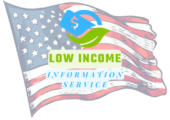Internet Access Low Income
In today’s digital age, access to the internet is essential for everything from education to job searching to staying connected with loved ones. However, for Internet Access Low Income can be a significant challenge. In this blog post, we will explore the various ways in which low-income individuals can qualify for a low-income internet plan and how low-income households can access broadband internet. We will also discuss the positive impact that affordable internet can have on the lives of low-income individuals. Join us as we delve into this important topic and learn how to bridge the digital divide for those in need.
How do I qualify for a low-income internet plan?
Qualifying for a low-income internet plan can be a great help for individuals and families who struggle to afford regular access to the internet. Many low-income households may find it challenging to pay for internet services at the standard market rate, making it difficult to stay connected in today’s digital world. Fortunately, there are options available to help those in need gain access to affordable internet services.
One common way to qualify for a low-income internet plan is through the Federal Communications Commission’s Lifeline program. This program provides a monthly discount on internet and phone services for eligible low-income households. To qualify for Lifeline, individuals must meet certain criteria, such as having an income at or below 135% of the federal poverty guidelines or participating in federal assistance programs like Medicaid, SNAP, or Supplemental Security Income.
Another option for qualifying for a low-income internet plan is to research and apply for internet service providers’ affordable programs. Many internet companies offer discounted rates for low-income individuals and families, with some even providing free or low-cost internet service for a certain period. It’s important to explore different providers and their specific eligibility requirements to find the best option for your household’s needs.
How do low-income households get broadband Internet?
Access to the Internet is essential for many aspects of modern life, from education and job searching to accessing healthcare services. However, for those living on a low income, getting broadband Internet can be a challenge. Fortunately, there are several programs and initiatives in place to help households with limited financial resources access affordable and reliable Internet.
One option for low-income households to get broadband Internet is through the Federal Communication Commission’s (FCC) Lifeline program. This program provides a monthly subsidy to help eligible low-income individuals and families afford Internet and phone service. To qualify for the Lifeline program, individuals must have an income at or below 135% of the federal poverty guidelines or participate in certain federal assistance programs like Medicaid, SNAP, or Supplemental Security Income.
Another avenue for low-income households to get affordable broadband Internet is through Internet Service Provider (ISP) initiatives. Many ISPs offer discounted plans for individuals and families with low incomes. Some ISPs also participate in programs like ConnectHomeUSA, which aims to provide affordable Internet access to families living in HUD-assisted housing.
Positive Impact Of Affordable Internet For Low-Income Individuals
Access to the internet has become increasingly important in today’s digital world. However, for many low-income individuals and families, the cost of internet access can be a significant barrier. Fortunately, there are programs and initiatives in place to provide affordable internet options for those in need. These low-income internet plans can have a positive impact on individuals and households, offering opportunities for education, employment, and connectivity.
One of the key benefits of affordable internet for low-income individuals is the access to educational resources. With internet access at home, students can more easily complete homework assignments, conduct research, and access educational materials. This can help level the playing field for students from low-income families, providing them with the tools they need to succeed in school and beyond. Additionally, adults in the household can take advantage of online learning opportunities to improve their skills and qualifications for better employment prospects.
Moreover, affordable internet can also lead to improved job prospects for individuals in low-income households. Many job applications and opportunities are now found online, and without reliable internet access, individuals may miss out on these chances. By having affordable internet at home, individuals can search for jobs, submit applications, and even work remotely if applicable. This can open up new opportunities for employment and economic growth for low-income individuals and families.
| Benefits of Affordable Internet for Low-Income Individuals: |
|---|
| 1. Access to educational resources for students |
| 2. Improved job prospects for adults |
| 3. Enhanced connectivity and communication |
Frequently Asked Questions
How do I qualify for a low-income internet plan?
To qualify for a low-income internet plan, you need to meet the income requirements set by the internet service provider. Typically, these requirements are based on your participation in a government assistance program such as Medicaid, SNAP, SSI, or the National School Lunch Program. You may also qualify based on your household income and the number of people living in your household.
How do low-income households get broadband Internet?
Low-income households can get broadband internet through various programs offered by internet service providers. These programs are designed to make internet service more affordable for those who qualify based on income or participation in government assistance programs. Some providers also offer discounted or free internet service to eligible households.
What are the positive impacts of affordable internet for low-income individuals?
Affordable internet for low-income individuals can have a significant impact on their lives. It can improve access to educational resources, job opportunities, healthcare information, and government services. It can also help low-income individuals stay connected with family and friends, access online banking and shopping, and participate in digital inclusion initiatives.
What documentation is required to apply for a low-income internet plan?
The documentation required to apply for a low-income internet plan varies by provider, but it typically includes proof of participation in a government assistance program, such as a benefit award letter or enrollment documentation. You may also need to provide proof of income, such as pay stubs or tax returns, and proof of residency, such as a utility bill or lease agreement.
Are there any restrictions or limitations with low-income internet plans?
Yes, low-income internet plans may have certain restrictions or limitations. These can include data caps, reduced internet speeds, or limited access to certain online content. It’s important to review the terms and conditions of any low-income internet plan to understand the specific limitations that may apply.
How can I find out which internet service providers offer low-income plans in my area?
You can find out which internet service providers offer low-income plans in your area by visiting their websites or contacting their customer service departments. You can also use online tools and resources, such as the Federal Communications Commission’s Lifeline program website, to search for affordable internet options available to you.
What are some tips for maximizing the benefits of a low-income internet plan?
To maximize the benefits of a low-income internet plan, consider using the internet for educational, job-related, and personal development purposes. Take advantage of online resources for learning, job searching, and improving digital skills. Additionally, explore options for obtaining low-cost or free devices, such as computers and tablets, to fully utilize your internet access.



